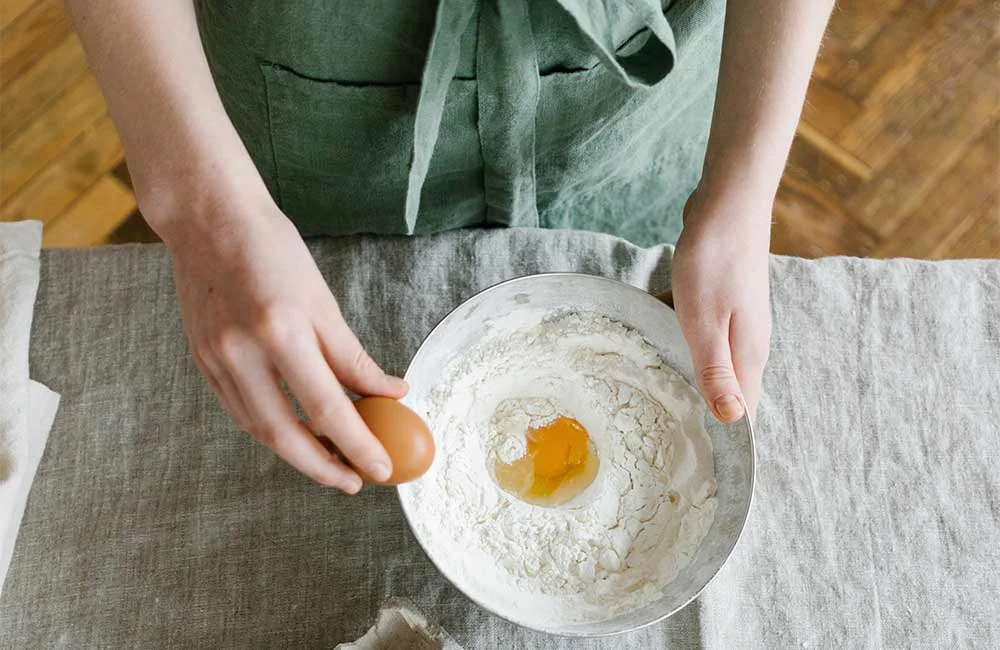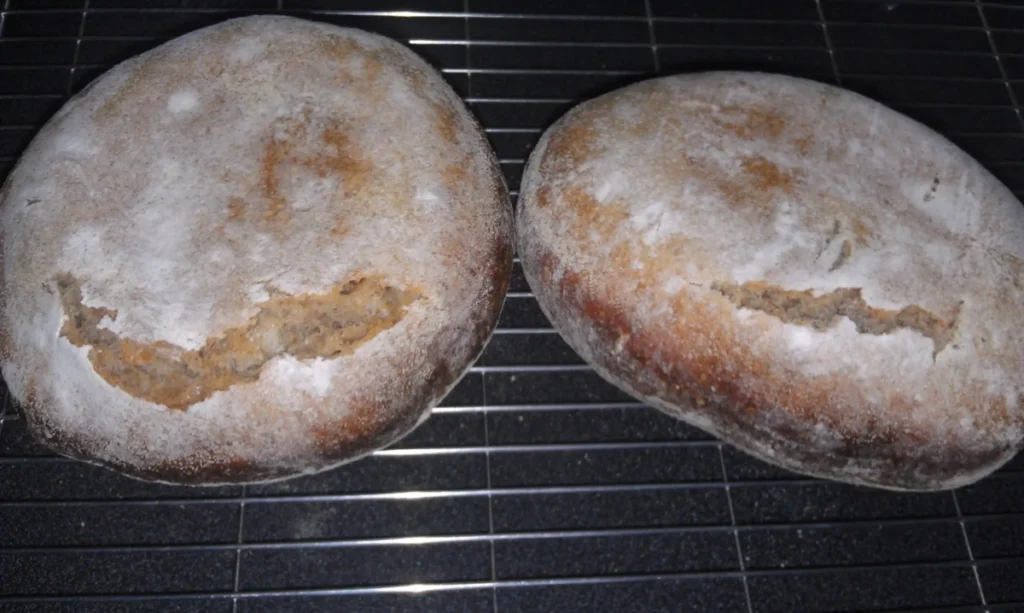
How To Know When Sourdough Is Done Bulk Fermentation
Sourdough baking is both a science and an art. One crucial step in the process is bulk fermentation, where the dough develops its flavor and structure. To create the perfect loaf, you need to know exactly when your sourdough is ready for this stage.
In this comprehensive guide, we’ll walk you through the process, sharing expert insights, personal experiences, and answers to common questions about how to know when sourdough is done bulk fermentation.
Table of Contents
ToggleWhat is Bulk Fermentation?
Bulk fermentation is the first and super important step in making sourdough bread. It’s when the dough sits and ferments as a whole, not in separate loaves. During this time, the yeast and bacteria in the sourdough starter do their thing, turning sugars into bubbles and a bit of alcohol. This natural activity helps create the flavors, textures, and structure we love in sourdough bread.
It’s a big deal because this is when the dough gets its unique taste and that chewy crust we all love. How long you let it ferment and the conditions it’s in really affect how your sourdough bread turns out.
Factors Affecting Bulk Fermentation
Several factors influence the bulk fermentation process:
- Temperature: The temperature at which you ferment your sourdough plays a significant role. Warmer temperatures speed up fermentation, while cooler temperatures slow it down.
- Type of Flour: Different types of flour contain varying amounts of nutrients and enzymes that affect fermentation. Whole wheat flours, for example, ferment differently than all-purpose flours.
- Hydration Level: The ratio of water to flour, known as hydration level, can influence fermentation. Higher hydration doughs tend to ferment more quickly.
How is Bulk Fermentation Different from Regular Fermentation?
Bulk fermentation and regular fermentation are both crucial steps in bread-making, but they have different roles and happen at different times. Here’s how they are distinct:
Bulk Fermentation:
Bulk fermentation is the first step when making sourdough bread. During this phase, the whole batch of dough rests and ferments together after you’ve mixed flour, water, and sourdough starter. Its main purposes are:
- Flavor Development: Bulk fermentation is where the dough gets its rich and unique flavors. The yeast and bacteria in the starter mix with the flour for an extended time, creating tasty compounds that give sourdough its characteristic taste.
- Building Structure: It helps the dough develop its structure, including forming gluten. This is crucial for getting the desired texture inside the bread.
- Some Rise: The dough does rise a bit during bulk fermentation, but it’s not the final rising that happens when shaping the bread.
Regular Fermentation:
On the other hand, regular fermentation occurs after you’ve shaped the dough into individual loaves. It’s also known as the “final proof” or “proofing” stage.
Here’s what makes it different:
- Final Rise: Regular fermentation is when the shaped loaves get one last rise before baking. This step gives the dough its final shape and size.
- Affects Texture and Crust: It plays a role in determining the texture inside the bread (the crumb) and the thickness and crispiness of the crust on the finished loaf.

How to Tell When Bulk Fermentation is Finished (6 Signs)
Figuring out when your sourdough dough has finished its bulk fermentation is a super important skill for any sourdough baker. While there isn’t a one-size-fits-all answer, there are some clear signs to help you know when your dough is just right:
- Bigger Size: One of the most obvious signs is that your dough has gotten noticeably bigger. You should see it roughly double in size during bulk fermentation. Keep an eye on how much it’s puffed up.
- Bubbles and Air: Check the surface of the dough for small bubbles and air pockets. These are signs that the yeast and bacteria are working hard and creating gases as they ferment the dough. These gas bubbles make your bread nice and airy inside.
- Slightly Puffy: Give the dough a gentle poke with your finger. A well-fermented dough should spring back slowly and still look a bit puffy. If it bounces back quickly, it might need more time to ferment.
- Good Smells: Take a whiff of your dough. A well-fermented sourdough should smell really good, with a slightly tangy aroma. If it smells pleasantly sour, it’s probably ready for the next step.
- The “Windowpane Test”: To be more sure, you can do the “windowpane test.” Just take a small piece of dough and carefully stretch it between your fingers. A properly fermented dough should stretch thin enough to make a see-through “windowpane” without tearing. If it tears easily, it needs more time to ferment.
- Timing: Bulk fermentation usually takes somewhere between 4 to 12 hours, depending on stuff like how warm it is, what kind of flour you’re using, and how wet your dough is. You should follow your recipe’s recommended time as a general guide.
Is Bulk Fermentation Better in the Fridge or at Room Temperature?
Remember, patience is key during this stage. If you rush through it, your bread might not taste or feel as good. By keeping an eye on these signs and adjusting your timing, you’ll get really good at knowing when your sourdough bulk fermentation is just right, setting the stage for some awesome homemade bread.
Deciding whether to let your sourdough dough rise at room temperature or in the fridge depends on your timing and the flavor you want in your bread. Both ways have their good points, and knowing when to use each can step up your baking skills.
Room Temperature Bulk Fermentation:
Leaving your dough at room temperature is the classic method and is popular among artisan bakers. Usually, it’s around 68°F to 75°F (20°C to 24°C). This way is quicker, taking about 3 to 4 hours, perfect if you want fresh bread sooner.
The upsides of room temperature fermentation are that it gives your sourdough a richer, more complex flavor because the yeast and bacteria have more time to mingle. It also helps the dough develop nicely, so you get a well-structured loaf.
But, keep an eye on it at room temperature, especially in warm places, to prevent it from fermenting too much. You’ll need to adjust your timing based on the room’s temperature.
Refrigerator Bulk Fermentation:
On the flip side, if you want flexibility in your baking schedule, put your dough in the fridge. This slows the fermentation way down, so you can let it rise for 8 to 12 hours or even overnight.
Fridge fermentation gives your sourdough a milder taste with a touch of sweetness. It’s a good choice if you like your bread less tangy. Plus, this method makes the dough more flexible, so it’s easier to shape.
In the end, whether you go with room temperature or fridge fermentation depends on what you like and when you can bake. Try both ways to see which works best for your sourdough goals

Can You Let Bulk Ferment Go Too Long?
Yes, it’s possible for the bulk fermentation stage to go on for too long, and this can lead to some unwanted outcomes for your sourdough bread. While letting it ferment for an extended period can boost the flavor, there’s a point where it becomes counterproductive.
If you let the bulk fermentation stage continue for too long, here’s what can happen:
- Over-Fermentation: The dough might ferment excessively, resulting in an overly sour taste and a heavy, sticky texture.
- Weakened Structure: The gluten structure in the dough can break down, leading to a flat, formless loaf that doesn’t rise well in the oven.
- Loss of Aroma: Extended fermentation could cause the dough to lose its delightful, tangy smell and become unpleasantly sour.
To prevent over-fermentation, keep a close eye on your dough’s readiness cues and stick to the recommended timeframes in your recipe. Factors like temperature and dough hydration are crucial in determining how long the bulk fermentation should last. Striking the right balance is key to achieving that perfect sourdough flavor and texture.
5 Common Mistakes to Avoid in Sourdough Bulk Fermentation
Achieving a perfect sourdough loaf involves mastering each step of the process, including bulk fermentation. Here are five common mistakes to steer clear of during this crucial stage:
- Overfermentation: Allowing your dough to ferment for too long can result in an overly sour and flat loaf. Keep a close eye on the dough, especially in warmer temperatures, to avoid this issue. Adjust the time based on factors like room temperature and dough consistency.
- Underfermentation: On the flip side, underfermentation can leave you with a dough that lacks flavor and proper structure. Make sure to give your dough ample time to ferment and develop its taste and texture.
- Inadequate Dough Strength: Insufficient gluten development can lead to a sticky, unmanageable dough. Be diligent with your stretch-and-fold technique during bulk fermentation to ensure your dough has the necessary strength for a beautiful rise.
- Inconsistent Mixing: Properly distributing your sourdough starter or preferment throughout the dough is crucial for even fermentation. Inadequate mixing can result in uneven flavor and texture in your final loaf.
- Ignoring Temperature: Temperature plays a significant role in fermentation. If your room is too warm, your dough might ferment too quickly, leading to issues like overfermentation. Conversely, in a cold environment, fermentation can be sluggish. Pay attention to temperature and consider using a thermometer to guide your process.
By avoiding these common mistakes and following the guidelines in this article, you’ll be well on your way to achieving sourdough perfection during bulk fermentation.
Conclusion
Achieving the perfect sourdough bread is a rewarding journey that starts with mastering bulk fermentation. By understanding the factors that influence this process and recognizing the signs of a well-fermented dough, you can take your sourdough baking skills to the next level.
Now, go ahead and create delicious sourdough bread with confidence, knowing when your bulk fermentation is just right.
Lindsey Mackenzie
About me
Hi there! I’m Lindsey Mackenzie, the founder of Bake Smartly. Baking has been my passion since childhood, growing up in my father’s bakery. With Bake Smartly, I’m excited to share my love for all things sweet and savory. Join me on this delicious journey as we whip up scrumptious treats and sprinkle joy into every bite!






